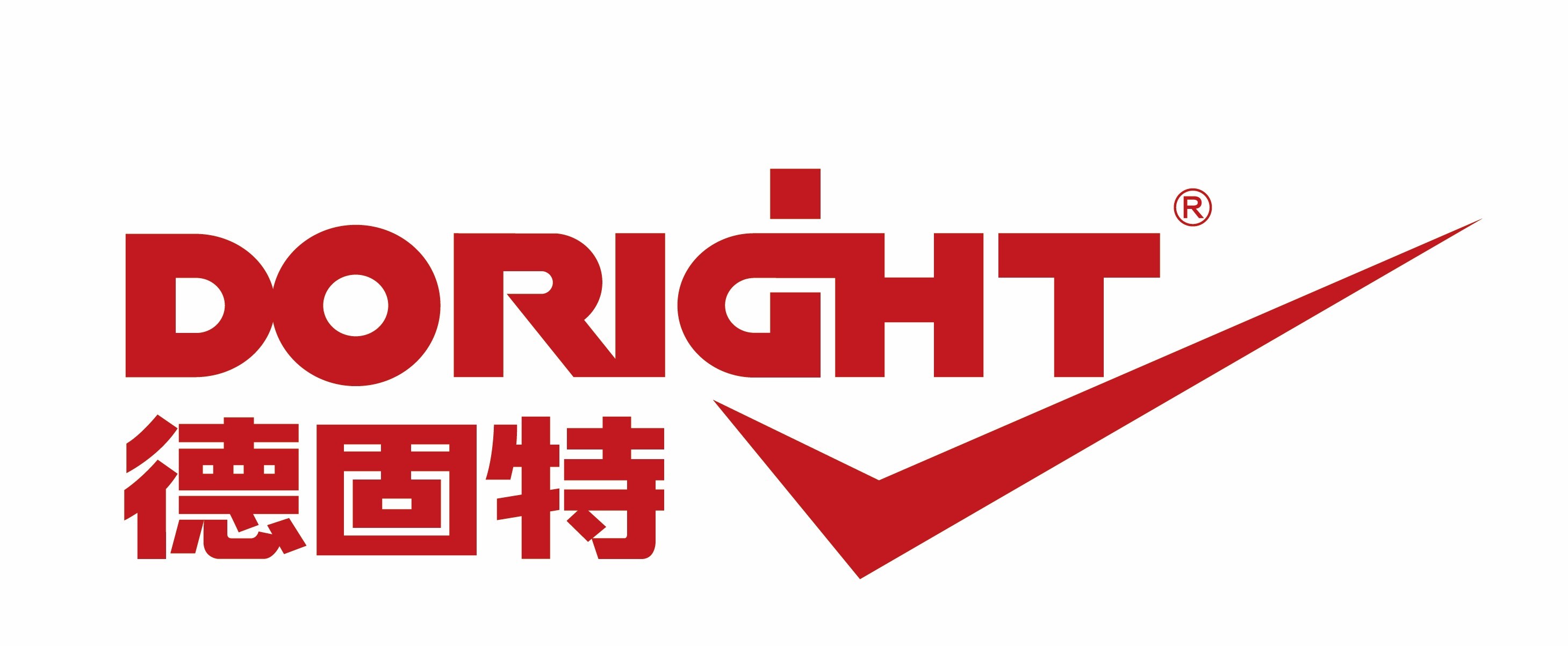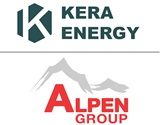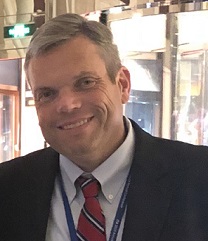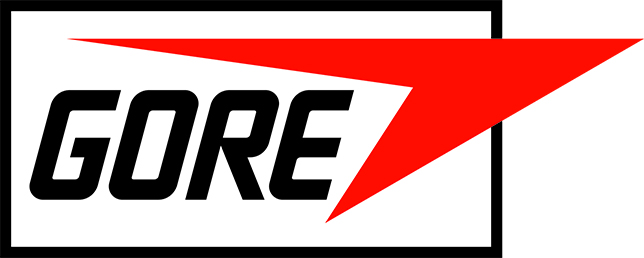Set the Stage– Sponsored by Greif-Velox

What the Audience Will Learn


With over three decades at Bridgestone Americas, Bill has extensive experience in both the technical and commercial aspects of the global tire business. Currently serving as the Executive Director of Sustainable Innovation & Circular Economy, Bill plays a pivotal role in shaping and executing the company's sustainable materials strategy, focusing on sustainable content, carbon intensity, certifications, and customer value … toward a fully circular and carbon-zero future in mobility.


Shannon Higgins is Cabot Corporation’s North America Marketing and Account Manager for its Reinforcement Materials business. Shannon joined Cabot in 2014 and has served in a variety of commercial and marketing roles. She currently works with customers in the tire industry with a focus on improving product performance and sustainability to meet today’s market demands. She received her MBA from the Johnson School at Cornell University and has an undergrad degree in Civil and Environmental Engineering from Bucknell University.


Paul Ita runs Notch Consulting, a Massachusetts-based research company dedicated to the market research needs of the global specialty chemicals industry. Mr. Ita focuses on raw materials for the global tire and rubber industries, with a particular focus on carbon black, silica, and rubber chemicals. Through Notch, he publishes the Carbon Black World Data Book and the Carbon Black Quarterly Newsletter.


Bio to come!

C.P. Natarajan, with graduate degrees in Mechanical Engineering from University of Madras & University of Pittsburgh, joined American Schack Company (later ALSTOM Power Energy Recovery, ARVOS) in1974 and developed High Temperature Air Preheaters & Energy Recovery Systems.
He organized Schack Carbon Black Conferences in USA (1996, 1998, and 2000).
He retired as President of ALSTOM Power Energy Recovery, USA in 2001 and started GANPADS, providing consulting services on Industrial Energy Recovery & Emissions Abatement (Carbon Black production & Petroleum Coke Calcination). He developed steam cooled Soot blower for High temperature Carbon Black Air-preheaters
From the first Carbon Black world conference in 1993 till the recent China CB conference in 2020, Natarajan made presentations at Carbon Black World, Carbon Black Asia Pacific and Carbon Black China conferences.
Carbon Black Asia Pacific presented him with LIFETIME ACHIEVEMENT AWARD in 2003 and STAR AWARD IN ENERGY RECOVERY RESEARCH in 2017.
In 2017, he was awarded US Patent 9540518, “APPARATUS AND PROCESS FOR AIR PREHEATER WITHOUT QUENCH IN CARBON BLACK PRODUCTION”


Josh Guilliams, Vice President of Consultancy, leads Smithers’ technical consulting team based in Akron, Ohio. Josh manages client relationships and works with other Smithers experts on complex projects. He also conducts in-depth investigations of a wide variety of rubber materials and final products on behalf of clients.
Before joining the team at Smithers, Guilliams spent several years in leadership at Polymer Valley Chemicals, Inc., as Technical Director and Vice President of Technical Operations. Prior to his time at Polymer Valley Chemicals, he held technical and commercial roles at Hankook Tire, EASTMAN Chemical Corporation, LANXESS Corporation, and Bridgestone Americas Tire Operations.


Michael brings over a decade of technical and commercial experience in the commodities and specialty chemicals markets. He holds a PhD in Chemistry from UT Austin and began his career as a Research Scientist for Sid Richardson Carbon. His work has been published and patented, and he developed a reputation for thinking creatively regarding the design of commercially-promising materials and production processes to increase efficiency and quality.
In his spare time, he enjoys traveling and sharing his love of the outdoors with family.


Jennifer Chittick is Senior Vice President, Safety, Health & Environment (SH&E) and Chief Sustainability Officer. In these roles, she is responsible for leading the overall development and implementation of comprehensive SH&E programs as well as the company’s sustainability strategy and reporting. Since joining Cabot in 2012, Jennifer has held a variety of roles within the SH&E organization, most recently as Vice President, SH&E. Prior to that, she was Product Safety and Toxicology Director as well as held several SH&E positions in North America. Before joining Cabot, Jennifer worked for BAE Systems. She is a Certified Industrial Hygienist (CIH), Certified Safety Professional (CSP), and serves as Director of the International Carbon Black Association (ICBA). She earned a MS in Environmental Health from Tufts University and a BS in Industrial Hygiene from Clarkson University.


Abegayl Thomas-McMillan has been part of the carbon black industry for over 10 years starting at the then Sid Richardson Carbon Co. as an intern and then assuming a full-time position as a Research Scientist. She is currently the Principal Scientist for Tokai Carbon CB, Fort Worth, TX where she focuses on new and sustainable product development. She has earned a Doctor of Philosophy in Chemistry from The University of Texas at Arlington, Arlington, TX and a BS in Chemistry from Midwestern State University.


Dr. Raymond Soufiani graduated from Oklahoma State University in 2014 in Physical Chemistry with emphasis in surface science. He worked on several experimental and theoretical projects during his Ph.D. program and published two papers and presented at several conferences. Two
of the projects he has worked on are already commercialized. He is a member of ACS, ACS Rubber, and ASTM D24 committee for carbon black. He joined Continental Carbon after graduation and worked as quality supervisor and superintendent at the Ponca City production plant until he was transferred to the Houston Technology Center (HTC) in 2017 as a Sr. Scientist when he started his journey on rubber compounding and testing fields. Later in 2022, he started his current position as HTC Laboratory Manager, leading daily activities and R&D programs. He has worked on several project since he joined the HTC; his recent project which is the topic for this presentation is a surface treatment of a low hysteresis carbon black to produce a filler to improve tire tread performance properties. He has three issued patents and several patents under review or provisional status related to this project.


Martin von Wolfersdorff, trading as "Wolfersdorff Consulting Berlin”, is an expert advisor and business partner of Smithers specialising in sustainable carbon blacks. Martin works with Smithers on carbon black consulting projects, writes Smithers reports and is the founder and business partner of the recovered Carbon Black Conference. Martin's corporate assignments were in carbon black, plastic packaging, plastic masterbatch and titanium dioxide. Martin has a Dipl. Ing. (Univ.) degree in chemical engineering from the FAU Erlangen-Nürnberg in Germany.


Tony Wibbeler is the Founder and CEO of Bolder Industries, where he leads the company’s vision to scale sustainable, circular solutions for the rubber, plastics, and petrochemical industries. Since founding Bolder in 2011, Tony has overseen its growth from concept to global commercialization, building key partnerships, securing strategic investments, and earning recognition for environmental and operational excellence. He holds degrees in Industrial Technology and Business from Ball State University


Biswajit has 30+ years of experience. Since 2023, he leads the technical side of Shine Carbon & Chemicals. Prior to that, he led the Research & Development activities as General Manager along with Global Technical Services for Himadri SPECIALITY Carbon Black Company (HSCL).
Before joining to Himadri Speciality Chemical Ltd., he was associated with Aditya Birla Group's BIRLA CARBON - the World's Largest Carbon Black Group for 16 years (2001-2017) in their overseas locations for Technical Services, Product Technology, etc. as Senior Manager (Global Product and Technical Services). Before his overseas role in Aditya Birla Group, he spent 9 years in Raw Material Evaluation & Compound Development at JK Tyres' R&D Centre (HASETRI). He gained vast practical experiences by auditing more than 100 tire raw materials suppliers both in India & abroad.
Biswajit completed his Master of Technology in Polymer Science & Rubber Technology from the University of Calcutta in 1992 and is a Six Sigma Black Belt holder.


Mr. Zichichi joined Phibro as COO and partner in June of 2021. In January of 2024 with the establishment of Phibro rCB he was also named Managing Partner of this new entity. He was previously Co-President of Global Oil Liquids at Castleton Commodities International the firm that acquired the Morgan Stanley physical oil business in 2015. Mr. Zichichi joined Morgan Stanley in 2007 as Global Head of the light ends products Team, and in 2015 he was named Global Co-Head of the physical oil business. Prior to Morgan Stanley, he was Global Head for Clean Fuels at Noble Group where he was responsible for the initial expansion of the company in the liquid commodities business and its establishment in the North and South American markets. Prior to Noble Group he was at Phibro which he had joined in 1994 as a trader and
later become the General Manager of the Petrochemical Department; the business he was managing was novated in 1998 to Noble Group. Mr. Zichichi started his career with ENI in 1983, as an analyst in the treasury group and then moved to New York in various marketing and management positions within the group subsidiaries in the petrochemicals and oil products area. Mr. Zichichi is currently a board member of the Ettore Majorana Foundation and Center for Scientific Culture, and the Mill River Park Collaborative. He graduated from H.E.C University in Lausanne in 1981


Bio to come!


Rob Dennis-Pelcher is a Principal Scientist in Goodyear's Global Material Science - Sustainability team, specializing in reinforcing filler development like carbon black, silica, recovered carbon from end-of-life tires, and nanomaterials. Additionally, Rob leads Goodyear’s Global Filler Technology Council to define and drive a reinforcing filler strategy for the company. With a PhD in chemistry from the University at Buffalo and over nine years' experience, Rob has advanced supplier capabilities and new material applications for Goodyear. His current focus is on sustainable filler materials and advanced filler performance, with recent successes earning him a spot in C&EN’s Talented 12 in 2024. Rob joined Goodyear in 2016, progressing from Staff Scientist to Principal Scientist. Prior to joining Goodyear, he was a Postdoctoral Research Associate at Texas A&M University. Rob’s PhD and postdoctoral work focused on the synthesis, characterization, and application of carbon nanotubes, graphene, and other nanostructured materials.


Shane Perl, a global chemical and energy industry expert with ~30 year’s experience. He is the founder and CEO of KERA Energy AG and its parent company ALPEN Group with offices in Boston, London, Rotterdam and Zug. KERA Energy’s mission is making tires and plastic circular. Kera focuses on tire and plastic recycling with a focus on technically and commercially optimizing the pyrolysis oils. KERA Energy, via its consultancy, aids customers to achieve accreditation in REACH, ISCC, and Enod of Waste (EoW). KERA also focuses on Plastic and Carbon Credits certification, marketing and sales as well as GHG/LCA calculations and ESG compliance for the recycling and petrochemical industry.
Prior to founding KERA Energy AG and ALPEN Group, Shane was the Global Feedstock Director (2009 – 2013) for the world’s largest Carbon Black producer, Cabot Corporation. Prior to Cabot, Shane worked for the world’s largest chemical company, BASF (1996-2009) with roles in various functions and global geographies. Educationally, his background is BS Chemical Engineering from Virginia Tech and a Masters in Business Administration (MBA) from the University of Detroit.

Mr. Tim Bart is principal of Carbon Management International, a consulting firm established in 1999. Mr. Bart co-publishes the monthly CBO Monitor with Mr. Vince Guercio reporting on carbon black feedstock and the carbon black industry. Prior to 2017, Carbon Management was involved in global coal tar and coal tar distillation, consulting and sourcing distillation products for related downstream industries. Mr. Bart serves as president of the International Tar Association, an industry association comprised of coal tar distillation and related companies. Mr. Bart received degrees in Environmental Science, Masters of Business Administration, Masters of Communications and Masters of International Relations from Rutgers University, Fairleigh Dickinson University and Seton Hall University.


Tayler Perrey is a seasoned Ceramic Engineer with a robust educational background and extensive professional experience in the industry. He graduated with a B.S. in Ceramic Engineering from Missouri Science and Technology, followed by a M.S. in the same field from Alfred University.
For seven years, Tayler honed his skills at Honeywell NSC, where he contributed to numerous projects and advanced his expertise. Since 2018, he has been with Zircoa Inc, serving as a Sr. Application and Development Engineer. In his current role, he focuses on new composition development, failure analysis, and customer application enhancements. Tayler is also the subject matter expert on zirconia refractories for carbon black reactors, bringing innovative solutions and improvements to this specialized area.


Eric Wilson is a senior-level sales engineer with over 20 years of experience across engineering design, project management, and business development in industries including aerospace, oilfield, plastics, and food processing. He is not only an accomplished technical sales leader, but also an entrepreneur, having owned and operated an engineering barcoding company for sixteen years. Throughout his career, he's managed global teams, developed multimillion-dollar portfolios, and presented patented technologies to organizations like NASA and the U.S. Department of Defense. Known for his strategic thinking, adaptability, and drive for innovation, Eric Wilson brings a unique blend of technical expertise and business leadership to Carbon Black World.


Vijay Garikipati has been in the filtration business for over 25 years. At WL Gore and Associates, he has been leading the global applications team for the chemicals segment for 15 years. His customers benefit from lower filtration costs through bag house optimization, problem solving, debottlenecking, supply-chain management, commercial and technical support of trials & deployment of new products, and training of personnel.
Mr. Garikipati holds degrees in Chemical Engineering and an MBA.


Grönqvist spearheads efforts to decarbonize the chemical, steel, metal refining, oil, and gas industries through the cutting-edge technology developed by Hycamite. She strategically develops and expands carbon product business globally, aligning with the dynamic needs of sectors such as the battery industry, conductive polymers, energy storage, and the green energy transition.
Grönqvist honed her expertise in driving business growth and market penetration. From providing strategic solutions in critical minerals like cobalt and nickel to innovatively training industrial clients in supercritical CO2 extraction technologies, from start-ups to major players on the NYSE.
Grönqvist's academic credentials include two Master of Science degrees in Chemical Engineering and Chemistry and research at ETH Zürich and the University of Oulu – particularly on "Catalytically Graphitized Carbon for Li-ion Batteries and Other Energy Storage Applications."


Bio to come!